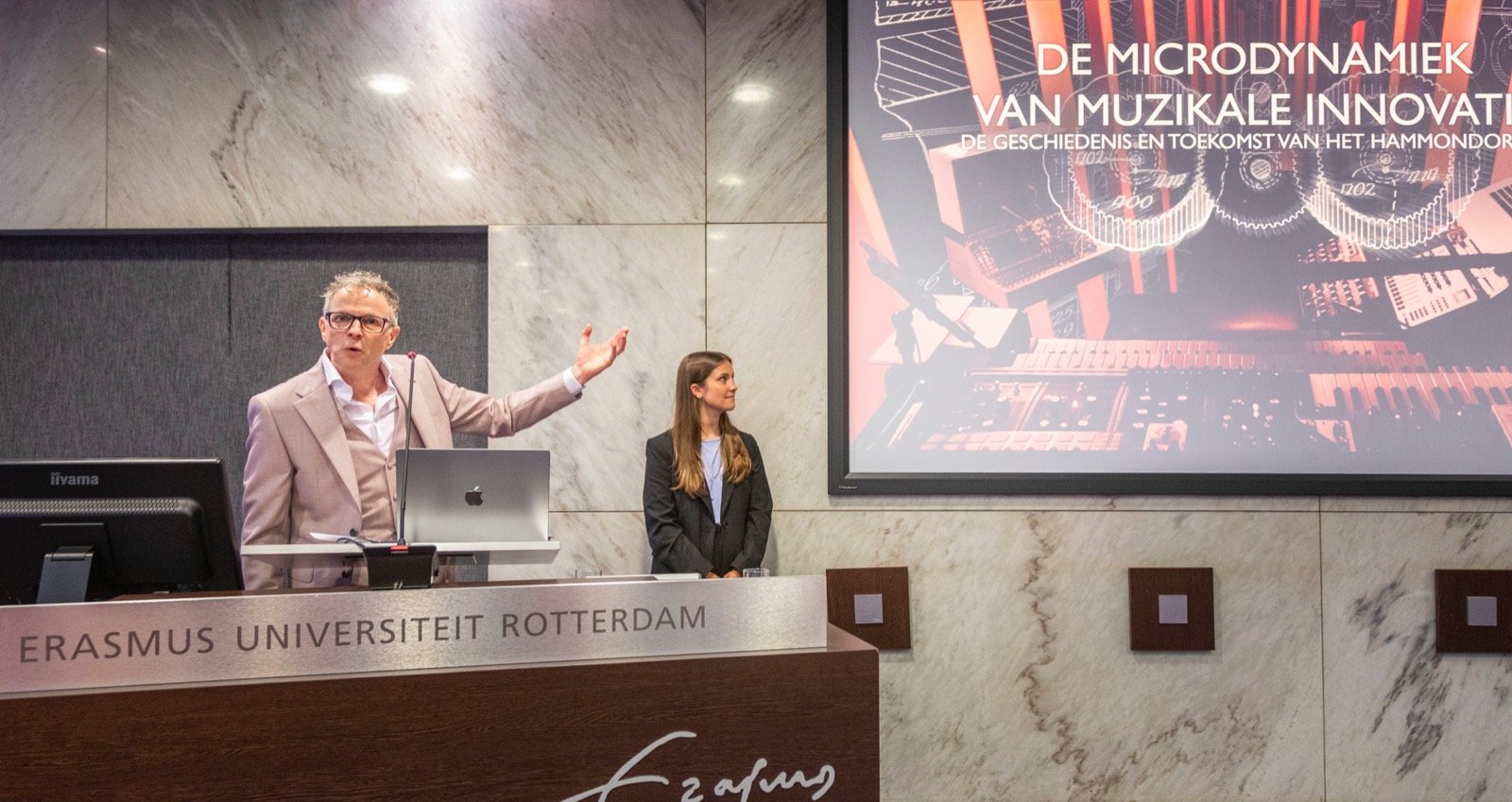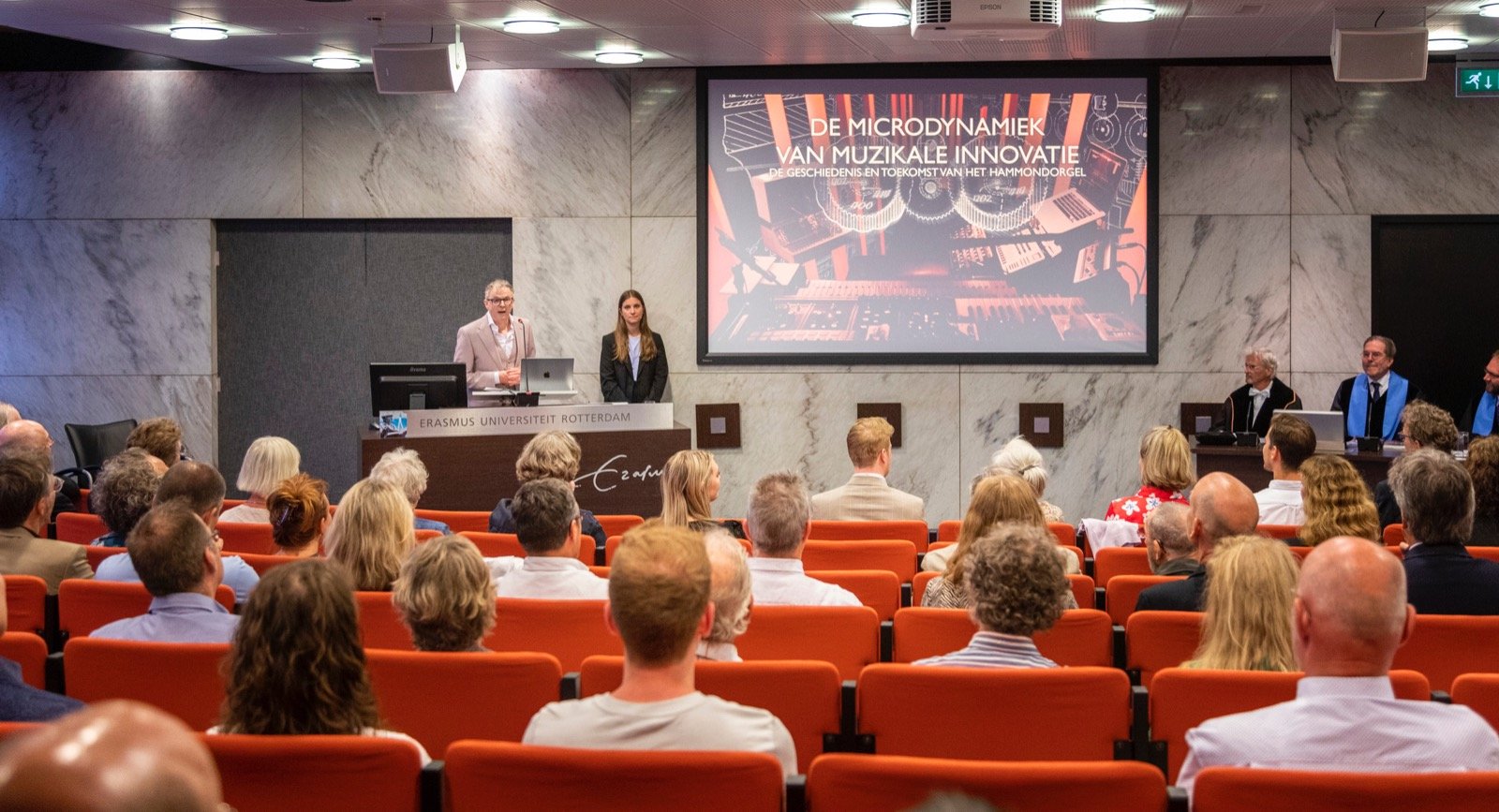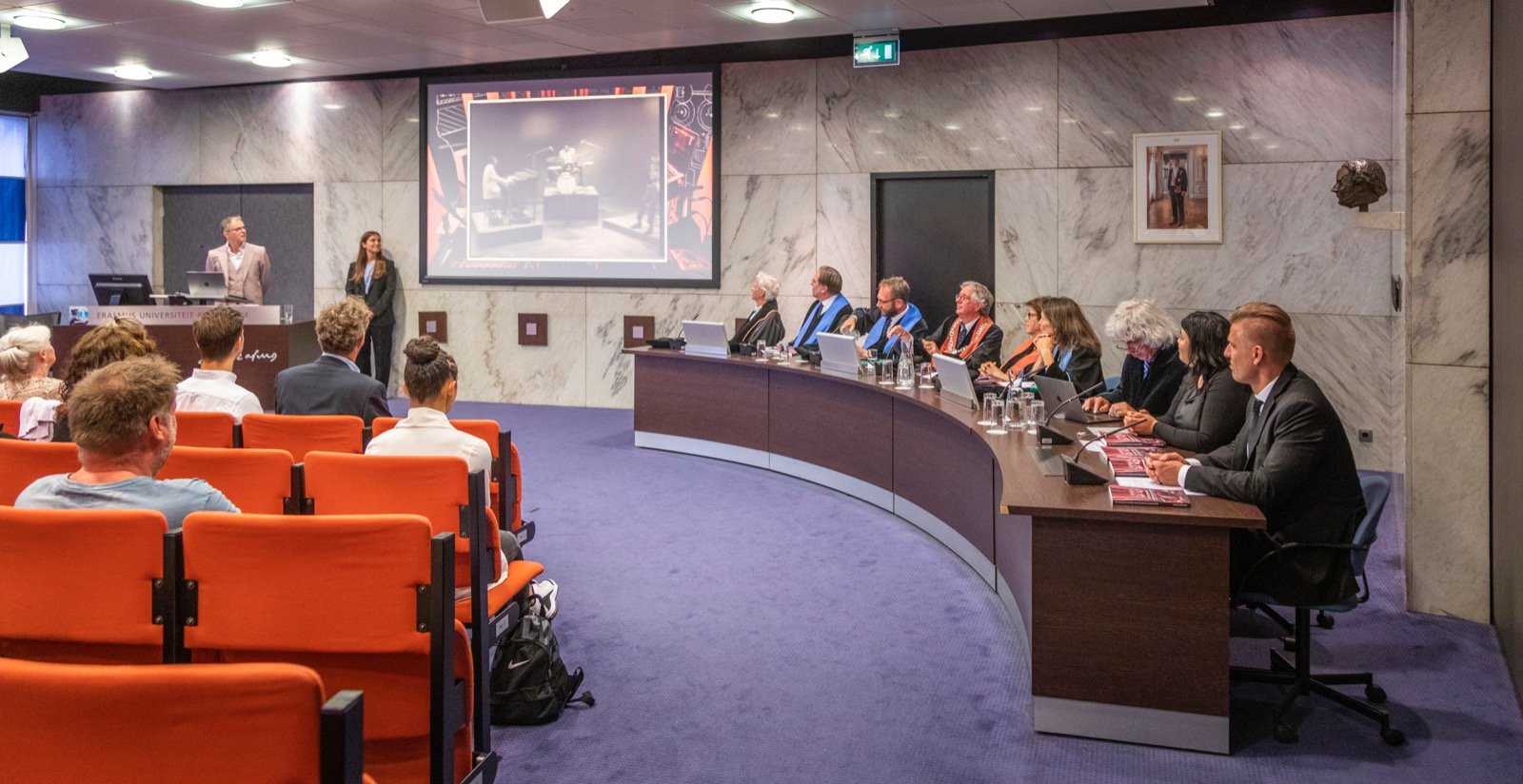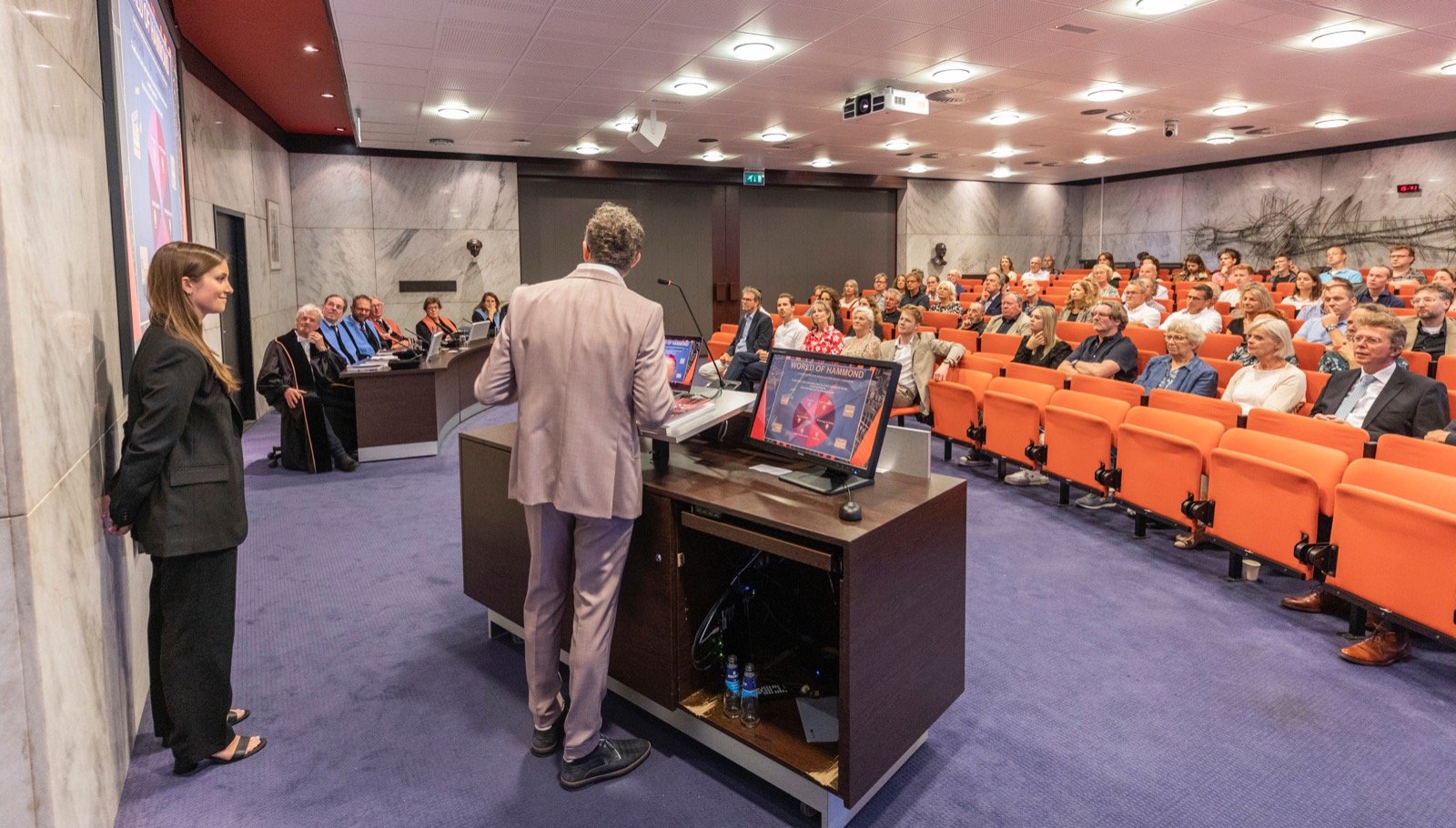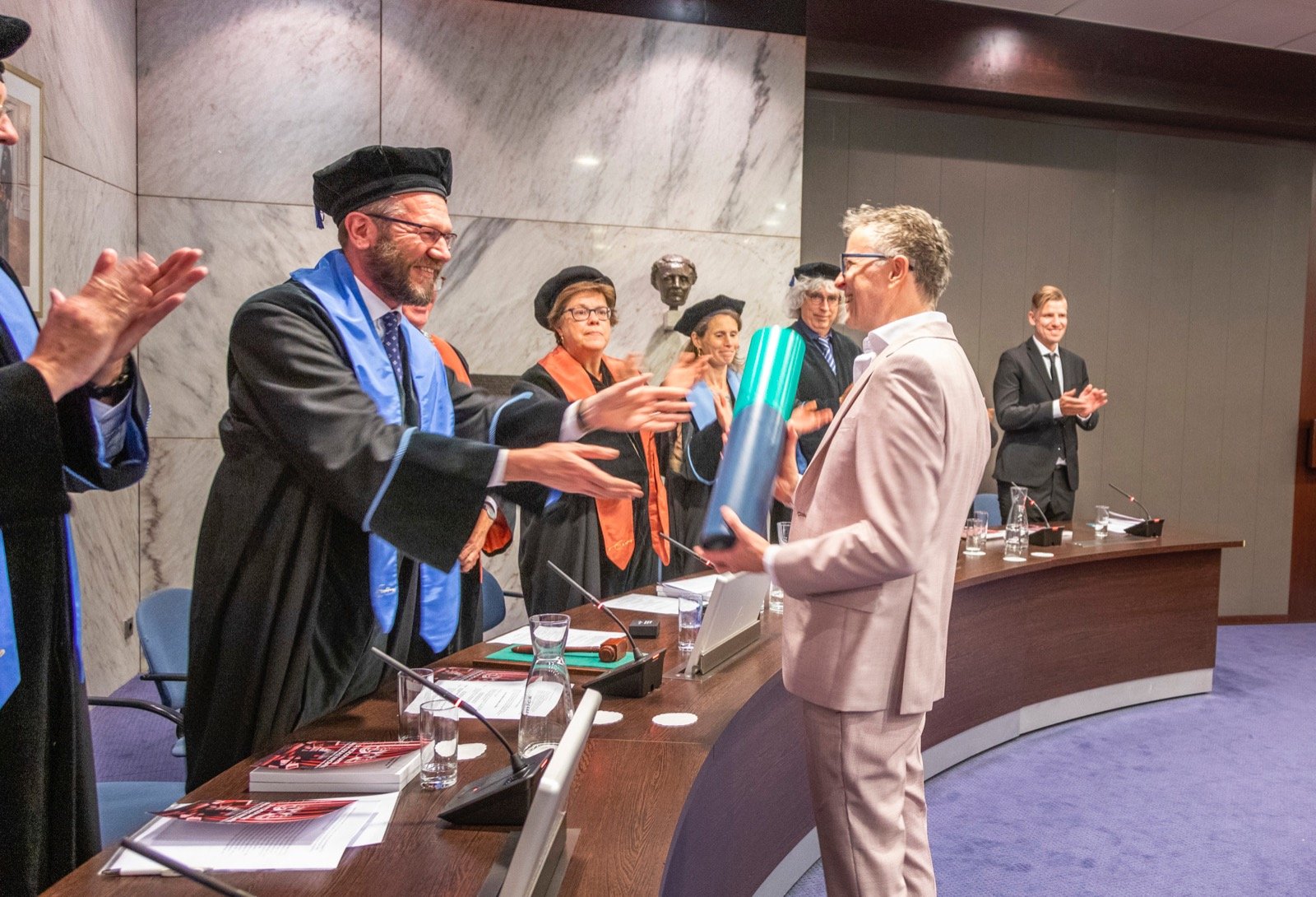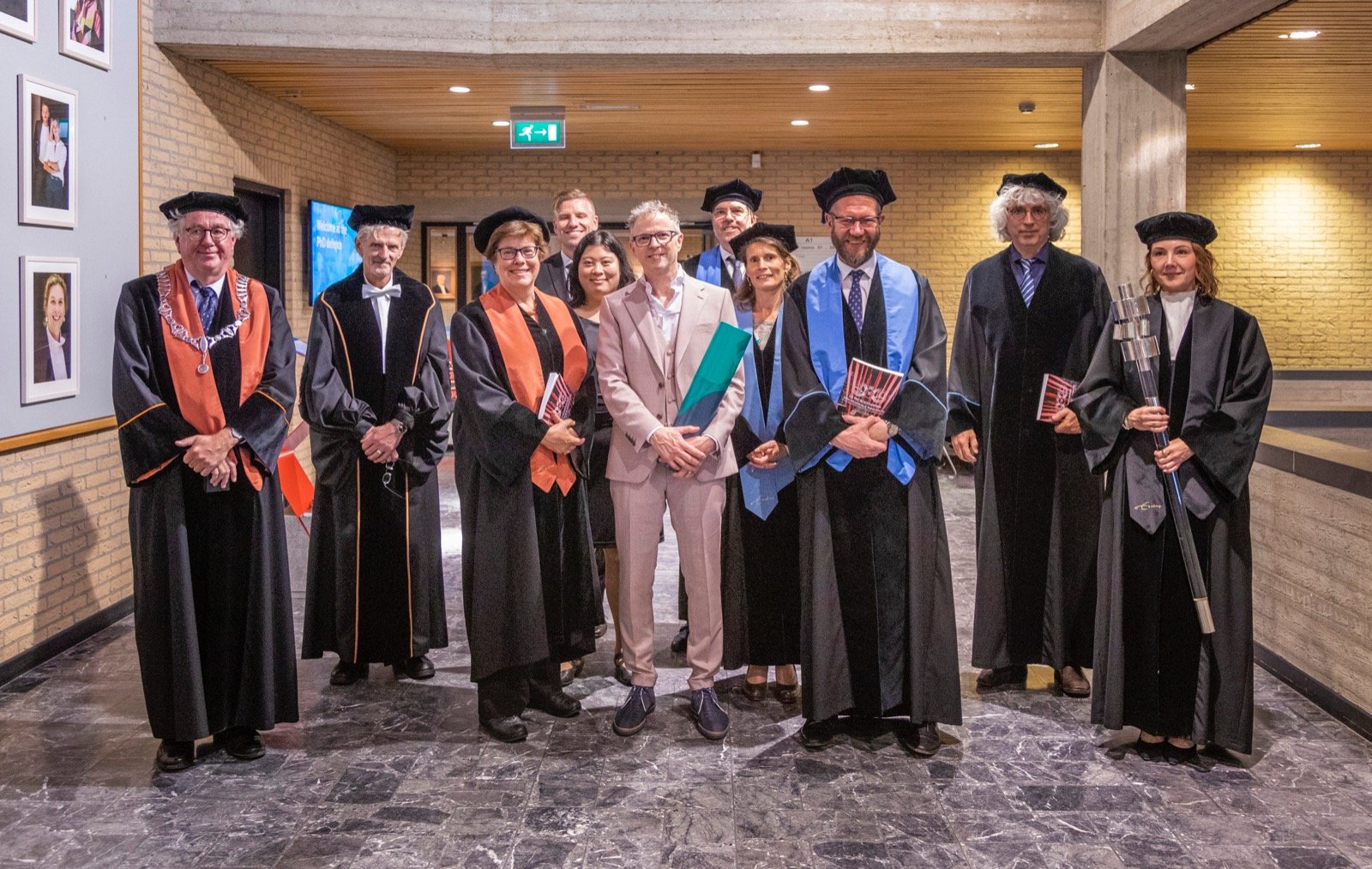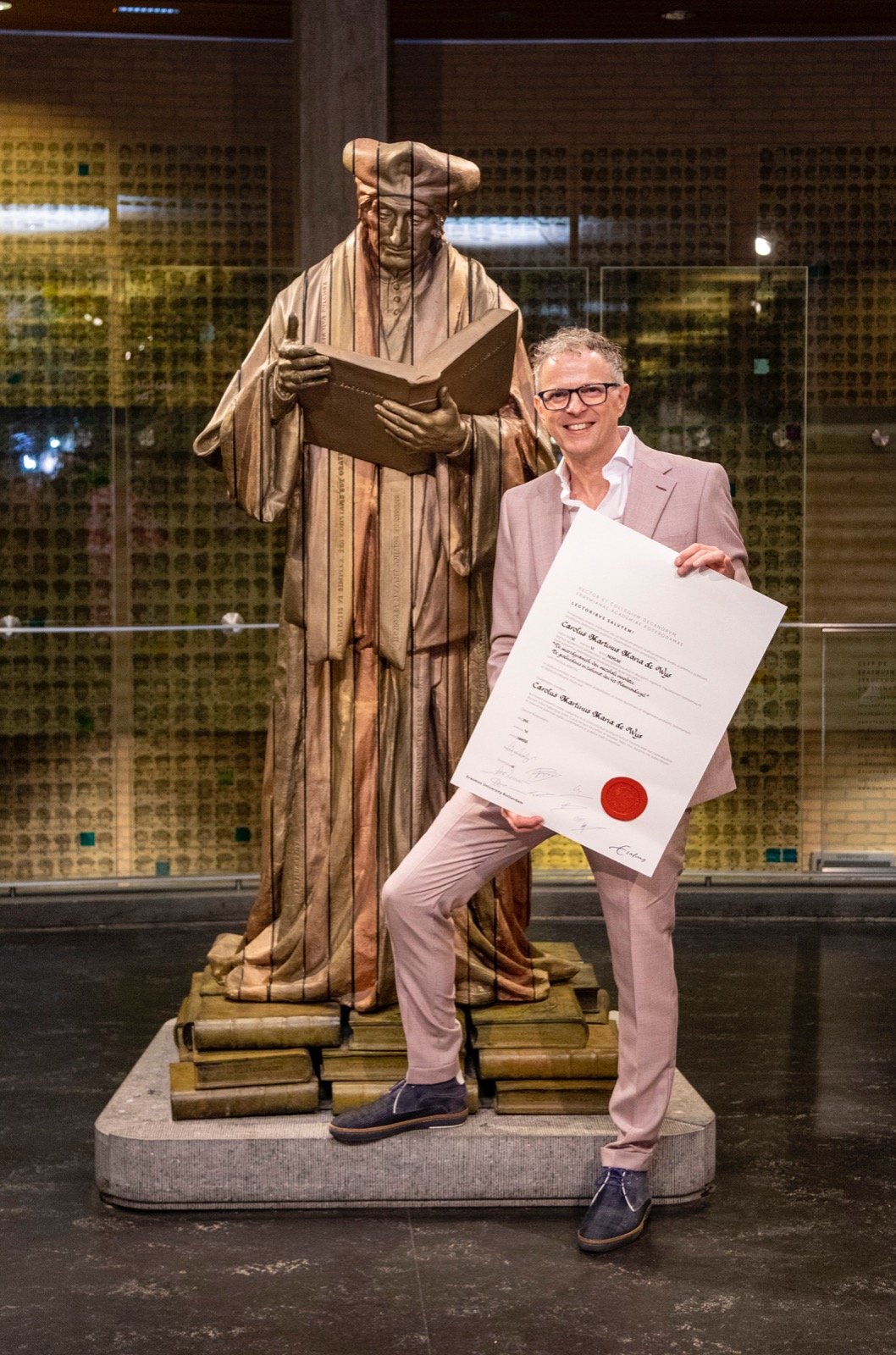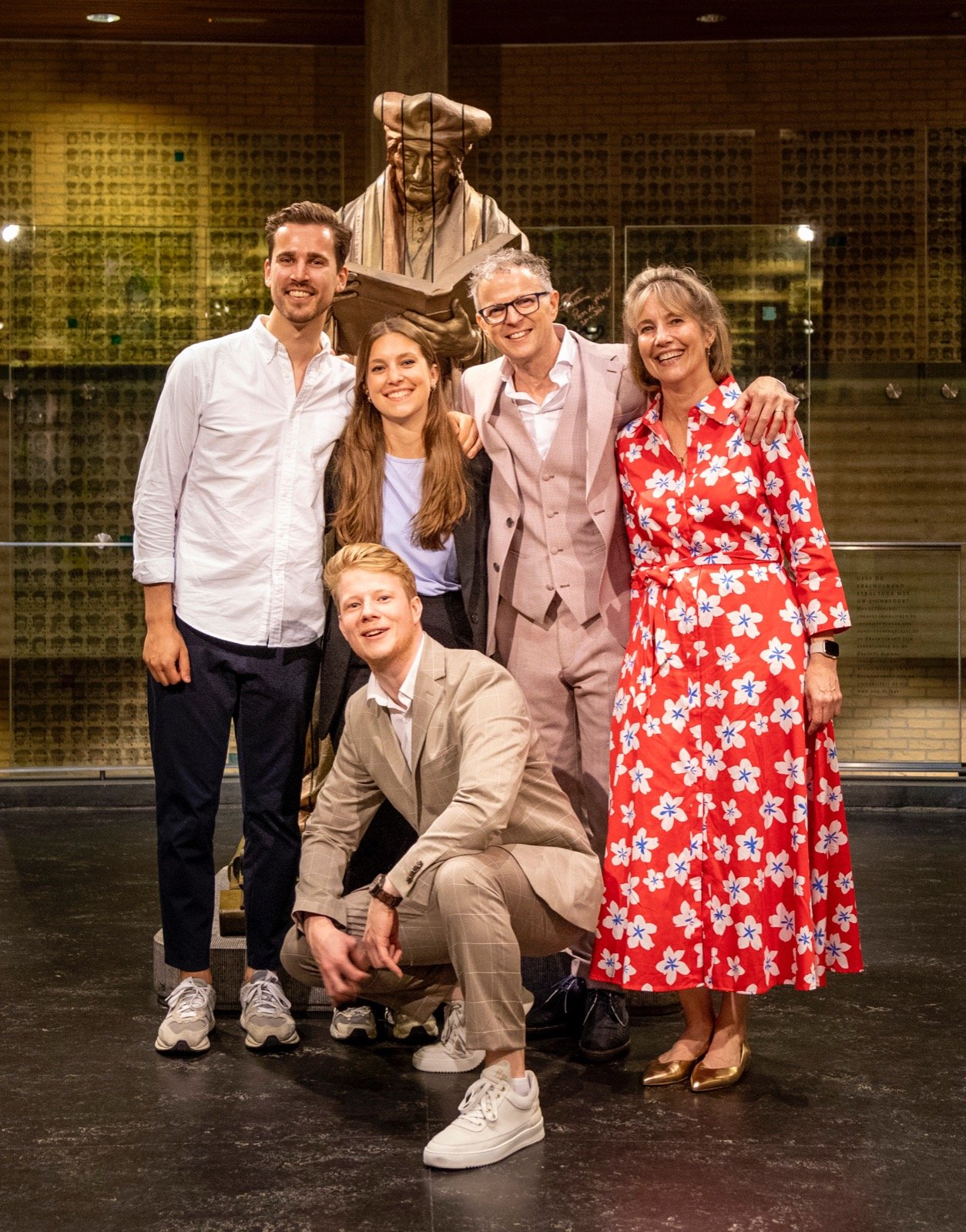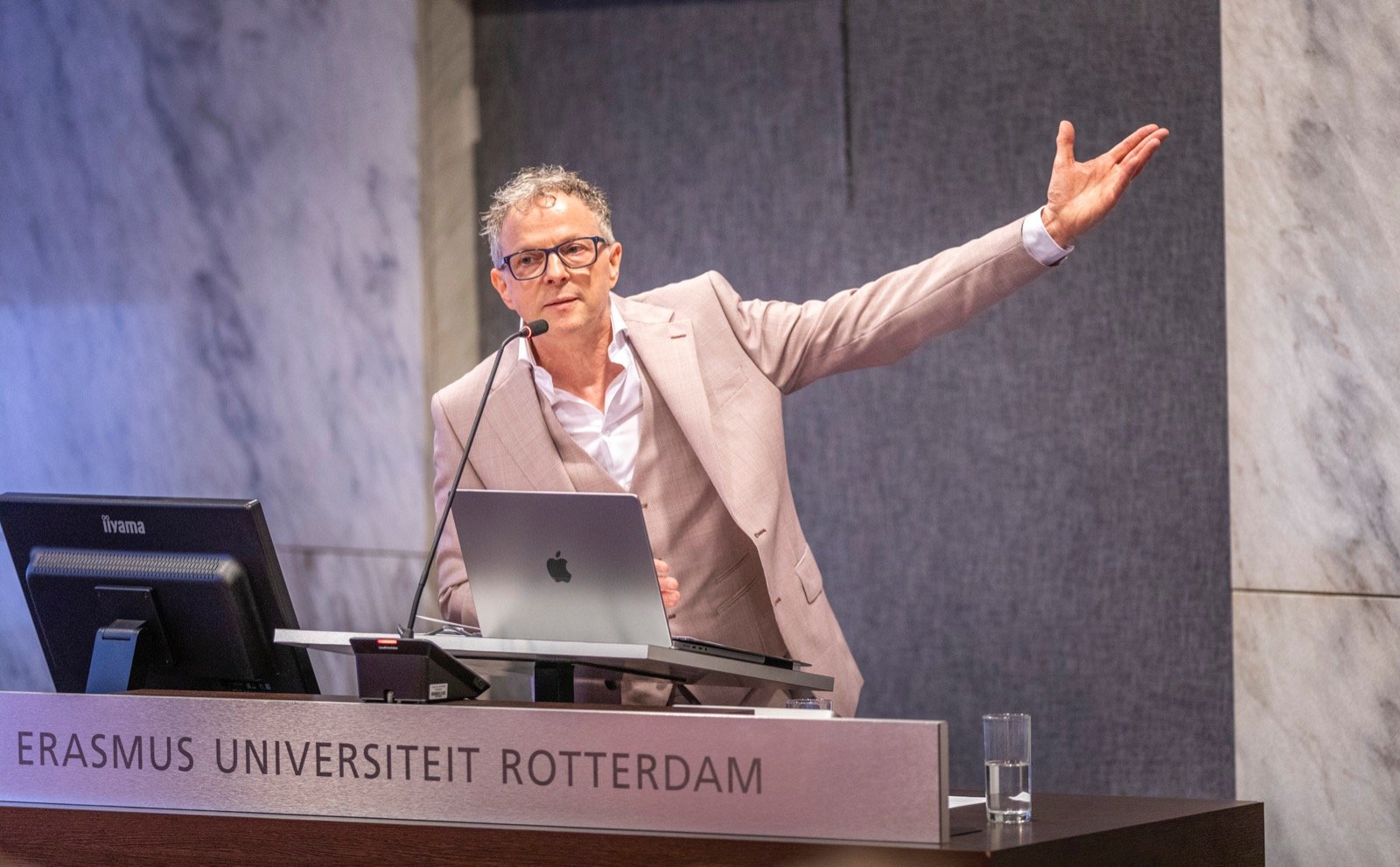
It’s a very special feeling: I obtained my doctorate degree with my PhD at Erasmus University on June 30th 2022.
From the moment I met my professor Liesbet van Zoonen in 2015, up to the beautiful words she spoke when awarding me the degree certificate; the whole process has been special for both myself and my academic supervisors.
As a musician, I had to leave my comfort zone to learn to think scientifically and work in a structured way in order to convert all information, interactions and knowledge into a dissertation – while still holding on to the creativity and passion for the subject. For my supervisors it was a challenge to guide my creative mindset and 'hyper-dynamics', and to steer all towards a scientific final phase. In doing so, they too had to leave their comfort zone, according to their own words. Artistic research represents an interesting cross-discipline in which the arts and science can mutually benefit. The challenge is to find the right balance and I am proud to have found it and was able to contribute.
The Microdynamics of Musical Innovation. The
History and Future of the Hammond Organ
The Microdynamics of musical innovation describes the history of the Hammond Organ in the context of the instrument’s main innovators; as well as the technical, musical, and societal developments that occurred simultaneously. It focuses on the extraordinary amalgamation of instrument, sound, and technology that has given rise to the overarching research question: How did innovation pertinent to the Hammond organ come about, and what role did individual, social, technological, economic, and other actors play in this process?
The research consists of a historical section and a present day section.
The historical analysis attempts not only to reconstruct the cultural and technological history of the Hammond organ, but also to explore the role of the many musicians that influenced these trajectories.
The present day section consists of a reflection on my own professional journey by way of an auto-ethnography; a series of laboratory sessions with musicians, educators, and the industry; and a vision for the future.
This dissertation uses empirical research to illuminate not only the development of the Hammond organ, but also the microdynamics of innovation in its entirety. With the aid of Latour’s Actor-Network Theory (ANT), Rogers’ innovation theory, and an auto-ethnography, this dissertation illustrates the developments in the world surrounding the Hammond organ.
This research was made possible by NWO, Nederlandse Organisatie voor Wetenschappelijk Onderzoek (Dutch Organisation for Scientific Research), started April 2016 and ended 30 June 2022

